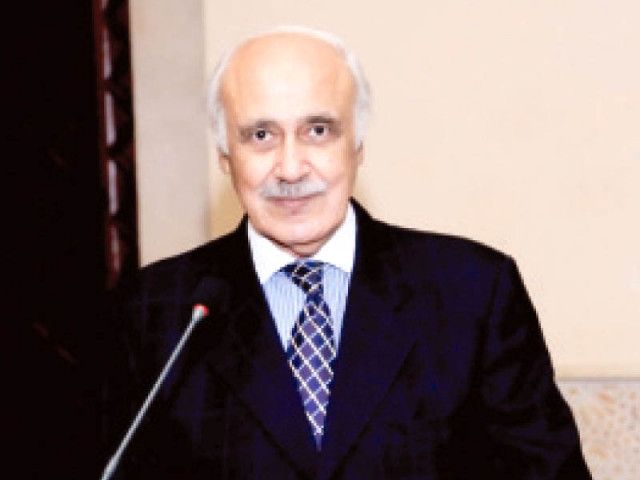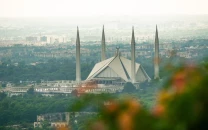Back in time: Family’s association with Ranjit Singh recalled
Aijazuddin launches book detailing his family’s history, role in 19th century Punjab.

Art historian and academic Fakir S. Aijazuddin launched his book titled “The Resourceful Fakirs — three Muslim brothers at the Sikh court of Lahore” at a private hotel on Friday evening.
The book pays tribute to Aijazuddin’s ancestors, documenting his family history and their respective roles during the reign of Maharaja Ranjeet Singh, the founder of the Sikh darbar in Punjab during the 19th century.
Captured in 1799, Lahore became the capital of Singh’s kingdom and yet, the author said, recognition of the ruler came too slow.
In his multimedia presentation, Aijazuddin highlighted how his ancestors — Azizuddin, Imamuddin and Nuruddin — played an instrumental role in establishing an identity of Punjab through Singh’s reign. They served in different capacities, aspiring towards a common goal for the greater good of the people.
The eldest, Fakir Azizuddin, was the foreign spokesman, negotiator and trusted adviser who dealt with the kingdom’s foreign affairs. He played a vital role in the Sikh kingdom by securing the Treaty of Amritsar in 1809 in which the British recognise Singh’s independent status and later the Tripartite Treaty of 1838, under which the crown and the raja forged an alliance as equal partners.
The middle brother, Fakir Imamuddin, held the keys to the Govindgarh Fort and was treasurer of the kingdom. Fakir Nuruddin, the youngest, was an important courtier and later became a member of the Regency Council.
Aijazuddin said that the Fakirs were originally hakims by profession. He also touched about the internal conflicts over the throne and shared anecdotes about the Koh-i-Noor diamond and foreign visitors who came to the Maharaja’s courts.
Unveiling details about the splendor of the sikh darbars and way of life, the author transported the audience back to the vibrant era. The Sikh empire in Punjab declined owing to internal friction and was formally taken over by the British in 1949.
Moreover, Aijazuddin dedicated the book to the late Anglo-Indian Khushwant Singh, sharing their last meeting.
The event was organised by the Asian Study Group as their year-opener.
Published in The Express Tribune, October 5th, 2014.



















COMMENTS
Comments are moderated and generally will be posted if they are on-topic and not abusive.
For more information, please see our Comments FAQ